Ahh, the churches and bell towers…easily my favorite part of the entire trip. I could devote an entire post to them (hmm that’s a thought). So here are the highlights in the order that we saw them:
Juan Luna shrine
On our way to Vigan, we made a quick stop at the the birthplace of Juan Luna. The original country home he grew up in was ravaged by fire so what you will find on this Badoc street corner is a reconstruction. Luna was a celebrated artist who won accolades in the art capitals of Europe, and he was a passionate man who lived in the moment. His story is darkened by scandal and crimes of passion and life behind the prison walls, all fodder for a painter’s canvass. The two-story house is a repository of the Luna memorabilia and replicas of his works including the masterpiece Spolarium which won him a gold medal at the National Exposition of Fine Arts in Madrid in 1884. My favorite parts of the house were Luna’s bedroom which is decorated in period furniture and dominated by a large four poster bed, as well as the azotea that connects the 2nd floor living area to the chapel and from which you can walk down to the well and garden.
Vigan, Ilocos Sur
The city of Vigan, with its well-preserved Colonial architecture is a World Heritage Site. It boasts of an urban landscape composed mostly of authentic bahay na bato structures, some of which are built entirely of stone while the upper half of others are made of wood. It was every bit as pretty as I imagined it would be. Did you know that Vigan was built by the Spaniards in 1572 as their 3rd settlement on the island after Cebu and Intramuros? I didn't. I learned that bit from my Insight Guides: Philippines.
Vigan is one big open-air museum, and these are some of my favorite pieces:
Vigan Cathedral & Plaza Salcedo
The cream-colored Vigan Cathedral or the Cathedral of St. Paul was the first of many earthquake baroque style churches we found here in earthquake country. Later we would see many more churches supported by similar buttresses and with a bell tower separately. Not too far from the bell tower is a McDonald's that looked really out-of-place no matter how hard they tried to make it blend in. Stretching out in front of the church is Plaza Salcedo which was named after the Spanish conquistador Juan de Salcedo. It was alive that afternoon with young and not-so-young locals who were playing around the plaza or just shooting the breeze.
Burgos house / Ayala Museum
Unfortunately, the Burgos house was closed by the time we arrived. Padre Jose Burgos was one of the three martyrs, collectively known as GOMBURZA, charged with subversion and rebellion then executed by the Spaniards in Bagumbayan in 1872. His birthplace is said to now be the finest repository of Ilocano culture, with a fine collection of antiques and a library.
Archbishop's Palace
Also on Plaza Salcedo is the Archbishop's Palace, originally established as the Arzobispado de Nueva Segovia. I loved this building! And I loved how it looked bathed in the late afternoon sunlight with the trees casting shadows across it's capiz shell windows. Across the street is a row of kalesas which I adored as well. They looked different, all brown and more not as open as those that ply the streets of old Manila.
Calle Crisologo
I was finally here at Calle Crisologo! The famous street I had only read about and seen thousands of pictures of until now. It's located at the heart of the Mestizo district and is lined on both sides by gorgeous centuries-old houses. I went nuts photographing the beautiful doors and windows! There are many shops selling authentic and not-quite authentic antiques and souvenirs. This is a good reason to drive up to Ilocos - all that trunk space in your car for your stash! I really wanted one of those bauls (chests). At the end of the road is Plaza Burgos which is famous for it's Vigan empanadas. We didn't have any though, but we did try the Pakbet pizza and Tongson's Royal Bibingka which I really liked! :)
Plaza Burgos
to be continued...
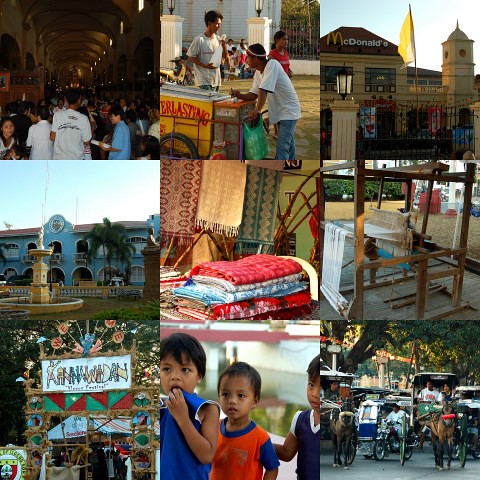
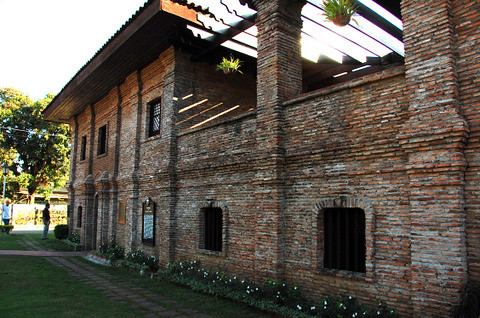

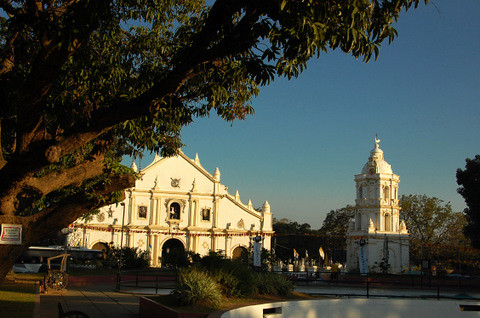
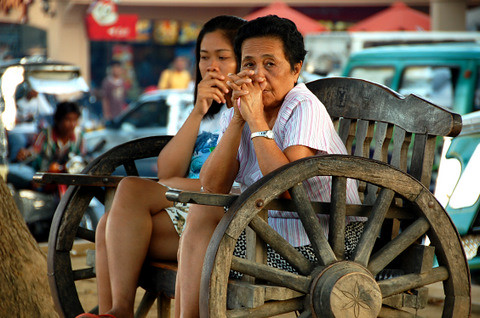
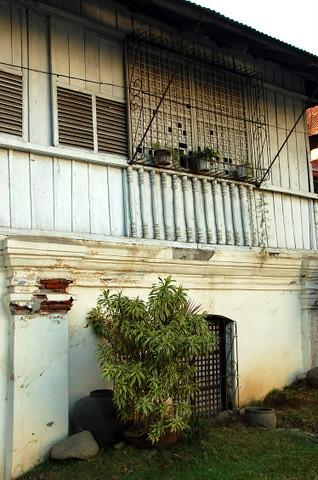
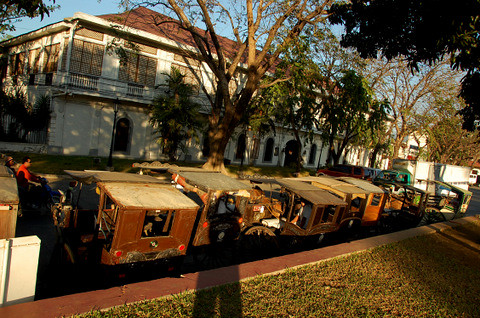
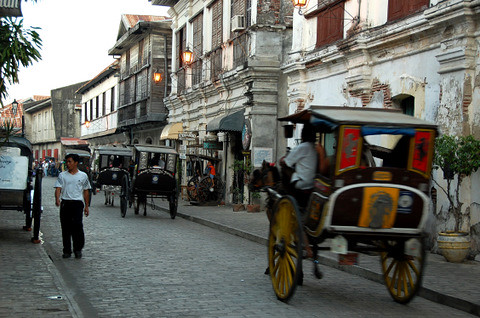

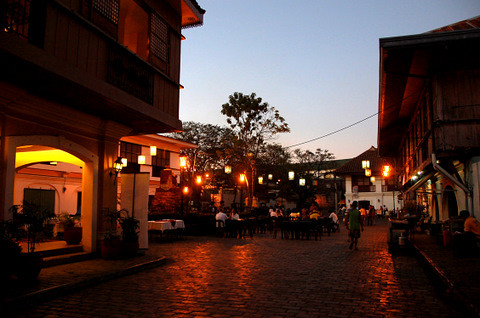
9 comments:
I love Vigan... it is like living in another time... all those wonderful old houses.
I need to go back to Vigan some day.
Beautiful pics!! I've never been to Vigan and I'd really like to visit it soon :)
Me too, Sidney. I love how you're taken back in time when you walk on those cobblestone streets lined wiht ancestral houses. I had a similar experience in Bohol last weekend - we did a heritage home tour. :)
Thanks, Cookie! :) Hope you get to visit Vigan and Laoag soon.
I loved finally seeing this place! Your photos and your post are bringing it all back! :)
If I remember correctly from my last visit, I'm pretty sure my mother's family lives very close to the Juan Luna house. I do remember visiting the Juna Luna house though.
I like those square calezas, they look like they're nearer the ground, not as tall as the karitelas in Sta. Rosa, Laguna. I remember riding in one when I was little and the horse all of a sudden got spooked, I almost got spooked myself.:)
Ooh, Vigan is so beautiful, those old houses and churches!
Me too, Jo! And loved seeing it with you and Anj. :)
Wow Marvin, really? So that would be in Badoc? It's a very nice sleepy town.
Hi Oggi! Actually I think they're about the same height, but because I took the photo from the plaza, it looks like it's nearer to the ground because the bottom part is hidden by the sidewalk. Yikes, I'd get spooked as well! Can you imagine if the horse on a kalesa stands on its hind legs? Yikes!
Hi. Was this a package tour? Did you arrange it yourself or did the hotel help? How about transfers? Does the hotel provide one to and from the airport?
I'm very much interested about going to Ilocos from your post. Please share travel tips.
Hi Ems, no it wasn't a package tour although Sitio Remedios can arrange one for you. We hired a van with driver/guide separately and I worked out a preferred itinerary from Manila, then sent it to Raymund (resort manager)and to Gani (guide/driver) so they could plan our route and schedule accordingly.
But we kept it flexible, adding and removing stops as we went along. That's what I like about independent (well somewhat) travel. What we spent on the van/guide was P2k /day plus actual diesel consumption. This is already a very good deal.
The resort also provides hotel transfers for P 1,500 each way; but you can also ask the van you're hiring to pick you up if you plan to use him that day already anyway.
We realized that Ilocos is not easy to explore if relying solely on public transport. We saw very few buses, and I don't think we saw any jeepneys plying the routes from town to town, but I'm sure there is. I suppose this is why many people prefer to drive up there from Manila so they have their own car to use while there.
I hope that answered your question, I'll be happy to answer any others you might have. :)
Post a Comment